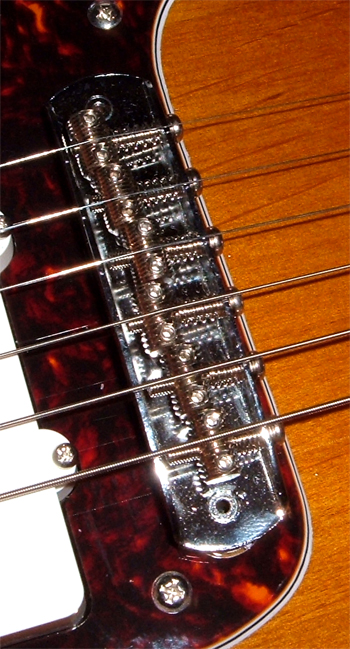etkre
Well-known member
Maybe this belongs in the Luthier section, but intonation is a concern for lots of us so...
I was getting frustrated trying to find a good location for the bridge on my banjo uke. Every spot was an unsatisfactory compromise intonation-wise, so I build one that could be adjusted:

The bridge is maple and the individual saddles are bubinga. The only thing holding the saddles in place is string tension, but they're not going anywhere even with hard strumming and stretching. And the intonation is as good as the fret placements will allow - darn near perfect all the way up.
It wasn't difficult to build, and I'm guessing it would work well on standard ukuleles. Probably just pull out the saddle, fill the in the grooves and fashion some new saddles.
I was getting frustrated trying to find a good location for the bridge on my banjo uke. Every spot was an unsatisfactory compromise intonation-wise, so I build one that could be adjusted:
The bridge is maple and the individual saddles are bubinga. The only thing holding the saddles in place is string tension, but they're not going anywhere even with hard strumming and stretching. And the intonation is as good as the fret placements will allow - darn near perfect all the way up.
It wasn't difficult to build, and I'm guessing it would work well on standard ukuleles. Probably just pull out the saddle, fill the in the grooves and fashion some new saddles.


